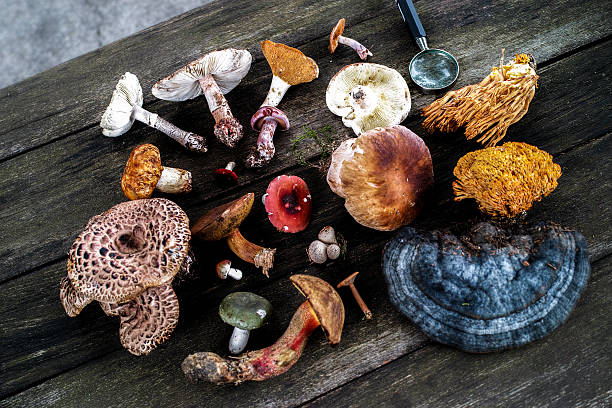Nestled amidst the verdant rainforests of Southeast Asia lies a treasure trove of traditional medicine: the Tiger Milk Mushroom (scientifically known as Lignosus rhinocerus). Esteemed by indigenous communities for centuries, this mushroom embodies a rich tapestry of cultural heritage and therapeutic efficacy. As contemporary science ventures deeper into the realm of natural remedies, the Tiger Milk Mushroom emerges as a formidable contender, boasting a plethora of health benefits rooted in both ancestral wisdom and empirical validation.
Ancient Traditions and Cultural Reverence
For centuries, indigenous tribes spanning Southeast Asia, particularly in Malaysia, have revered the Tiger Milk Mushroom, known locally as “Cendawan Susu harimau” in Malay. Its traditional usage, deeply entrenched in local folklore and healing customs, speaks to its esteemed position as a remedy for a myriad of ailments. The mushroom derives its name from the symbolism of strength and vitality associated with the majestic tiger, an emblem of the region’s jungles.

Tiger Milk Mushroom has long been employed to address a spectrum of health issues, from common respiratory ailments like colds and coughs to more severe conditions such as asthma, bronchitis, and allergies. Its versatility extends to combating inflammation, reducing fever, and alleviating joint pains, making it a cornerstone of traditional medicinal practices.
Unlocking Nature’s Secrets: Scientific Revelations
Unlocking Nature’s Secrets: Scientific Revelations While traditional knowledge serves as the cornerstone, contemporary scientific inquiry has begun unraveling the mysteries behind the Tiger Milk Mushroom’s efficacy. Recent research has illuminated its pharmacological properties, particularly its immunomodulatory effects, which underpin its therapeutic potential.
Investigations have identified bioactive compounds within the Tiger Milk Mushroom, including polysaccharides, terpenoids, and phenolic compounds, which exhibit profound effects on immune function. These compounds interact synergistically with the body’s immune system, bolstering its response to pathogens and inflammation while regulating allergic reactions.

Furthermore, the Tiger Milk Mushroom showcases potent antioxidant properties, neutralizing free radicals and mitigating oxidative stress, pivotal factors in maintaining overall well-being and combating chronic diseases.
Enhancing Accessibility and Awareness

Moving forward, comprehensive research endeavors are imperative to fully elucidate the mechanisms of action and therapeutic potential of the Tiger Milk Mushroom. Rigorous clinical trials and robust studies hold the promise of providing invaluable insights into its efficacy, safety profile, and optimal utilization, thereby facilitating its integration into mainstream healthcare protocols.
Rising Popularity and Future Prospects
In a landscape where ancient traditions intersect with modern scientific inquiry, the Tiger Milk Mushroom stands as a testament to the enduring efficacy of traditional remedies. From its humble origins in the heart of Southeast Asian rainforests to its burgeoning prominence on the global stage, its journey mirrors humanity’s timeless pursuit of holistic wellness and healing.
As we navigate the intricate tapestry of nature’s pharmacopeia, let us honor the wisdom of the past while embracing the possibilities of the future. The Tiger Milk Mushroom serves as a beacon of resilience, bridging the chasm between tradition and innovation, and offering a glimpse into the boundless potential of natural remedies in nurturing health and vitality.

References:
Chang YS, Wasser SP. The role of culinary-medicinal mushrooms on human welfare and a healthier lifestyle: A review. Int J Med Mushrooms. 2012;14(3):197-216. doi: 10.1615/IntJMedMushr.v14.i3.10.
Wong KH, Lai CKM, Cheung PCK. Immunomodulatory activities of mushroom sclerotial polysaccharides. Food Hydrocoll. 2011;25(2):150-158. doi: 10.1016/j.foodhyd.2010.02.001.
Ng ST, Chang YS, Khoon CC. Tiger’s Milk Mushroom: An Overview. In: Nutritional and Therapeutic Interventions for Diabetes and Metabolic Syndrome. Academic Press; 2012:441-447. doi: 10.1016/B978-0-12-385083-6.00041-0.
Zakaria L, Abdullah N, Yusuf UK, Abdullah MZ, Kuppusamy UR. Immunomodulatory activity of Tiger Milk mushroom, Lignosus rhinocerus CFP isolated polysaccharopeptides in BALB/c mice. BMC Complement Altern Med. 2019;19(1):179. doi: 10.1186/s12906-019-2619-x.
Teoh YP, Tan NH, Lim RLH, et al. Tiger’s milk mushroom: Nutraceutical values, bioactive compounds, health-promoting properties, and therapeutic potentials. Foods. 2021;10(7):1497. doi: 10.3390/foods10071497.
Naidu JN, David P, Wong KH, et al. Lignosus rhinocerus (Cooke) Ryvarden: A medicinal mushroom of Sabah, Malaysia. In: Biobased Products and Industries. Springer; 2021:489-509. doi: 10.1007/978-981-16-3614-5_17.
Wasser SP. Medicinal mushroom science: Current perspectives, advances, evidences, and challenges. Biomed J Sci Tech Res. 2018;10(1):BJSTR.MS.ID.001777. doi: 10.26717/BJSTR.2018.10.001777.
Siau WY, Cheong KL, Ng TB. Tiger Milk Mushroom: Nutraceutical Value and Biological Properties. In: Nutraceuticals. Springer; 2016:227-235. doi: 10.1007/978-3-319-26122-6_17.
Lim RLH, Teng YT, Lim SH, et al. Tiger milk mushroom: a potential superfood for the prevention of neurodegenerative diseases. Neural Regen Res. 2021;16(5):904-909. doi: 10.4103/1673-5374.290910.
Goh YC, Cheah YK, Tang SH, et al. Lignosus rhinocerus (Tiger Milk Mushroom) Biomass extract shows significant anticancer activity on colon cancer cells (HT29) and non-cancerous colonic epithelial cells (CCD841). Nutrients. 2020;12(5):1308. doi: 10.3390/nu12051308.
Yap HY, Chooi YH, Fung SY, Ng ST, Tan CS, Tan NH. Lignosus rhinocerus (Cooke) Ryvarden: A Medicinal Mushroom that Stimulates Neurite Outgrowth in PC-12 Cells. Evid Based Complement Alternat Med. 2014;2014:313632. doi: 10.1155/2014/313632.
These references provide comprehensive insights into the traditional use, scientific research, and potential health benefits of Tiger Milk Mushroom, aiding readers in understanding its efficacy and importance in modern health practices.



